UTI-4 with M-25 or M-25A

The prototype of the mass-produced training version of the I-16, built in Zavod 21, was delivered at the end of November 1936. Its serial number was 15211: type 15, built in GAZ-21, n.1.
It can be considered both as an evolution of the UTI-2 now equipped with the same engine, propeller, cowling, fin and ailerons of the Type 5, or as an unarmed two seater version of the Type 5.
All the serials of UTI-4 started with 15, so it can be considered as the I-16 Type 15 although it appeared before the Type 10 of 1938; so, the prefix 1 can be considered indicative of a two seater version of Type 5, from here the choice of calling it 'Type 15'.
Images from Polikarpov I-16 of Gordon and Dexter

This view from behind shows that the cockpit area was at first identical to that of UTI-2: the front headrest was wide and closed the front view of the back windshield. The top of the rear headrest and the back was squared.
The photo of prototype shows an unidentified square thing under the rear windshield, absent on production planes.
The propeller turned counterclockwise, so the torque had to be contrasted; so the fin was angled 2° to the left as on all I-16 types starting with Type 5, instead of on the right as it was on Type 4 and UTI-2 whose propeller turned clockwise.
Images from Polikarpov I-16 of Gordon and Dexter
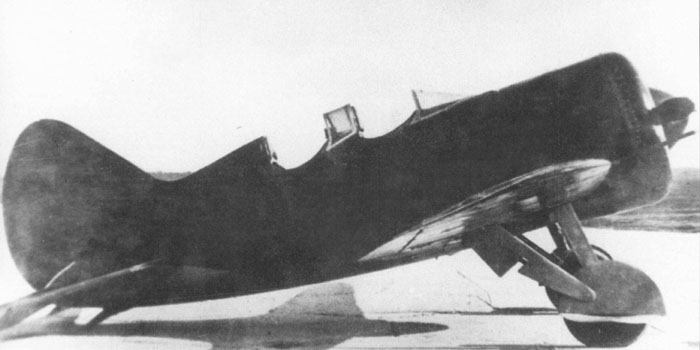
The side view shows that there are not protruding hinges under the wings; this was common to late UTI-2 and Type 5, while the early UTI-2 had protruding hinges as on Type 4.
The profile of the cockpits, of the back and of both windshields was, at first, the same of UTI-2.
The production figures vary from 843 planes to 3189 planes, according to the sources; the type was produced in GAZ-21, GAZ-153 in Novosibirsk and GAZ-458 in Rostov On Don, later in Baku.
- GAZ-21 completed its last UTI-4 numbered 1521983 in 1941; this would suggest a production of 983 planes on that factory.
- GAZ-153 completed its last UTI-4, numbered 15153404, in 1941; this suggests a production of 404 UTI-4 in that factory.
- GAZ-458 completed its last UTI-4 numbered 154582511 in 1942; according to Gordon, it produced 459 planes in 1941-42.
On this base, the total production could have been around 1850 planes.
Images from Polikarpov I-16 of Gordon and Dexter
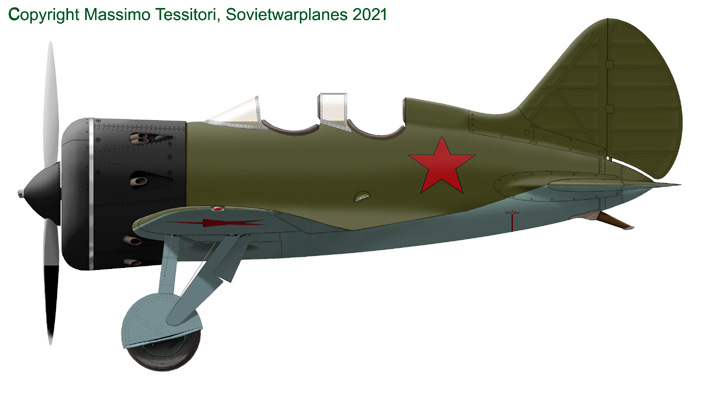
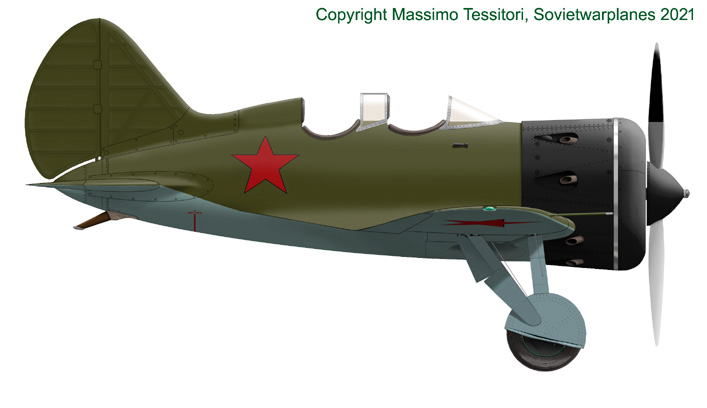
Early production UTI-4s had the same rear windscreen and flat top as on UTI-2;
they differed from UTI-2s for:
-
engine M-25 or M-25A, with the same cowling of type 5;
-
counter-clockwise VFSh propeller with pith adjustable only on the ground, with pointed spinner (as on later types 10 and 17);
-
tail fin twisted on the left of 2° (as on type 5 and later)
-
reinforced wings (introduced in spring 1937) and long ailerons as on type 5, but without armament; very early production UTI-4 could have had unrenforced wings as those of UTI-2 and early Type 5.
When compared to later variants, some photos seem to show that the windshield, at least of some planes, was marginally smaller than on later UTI-4.
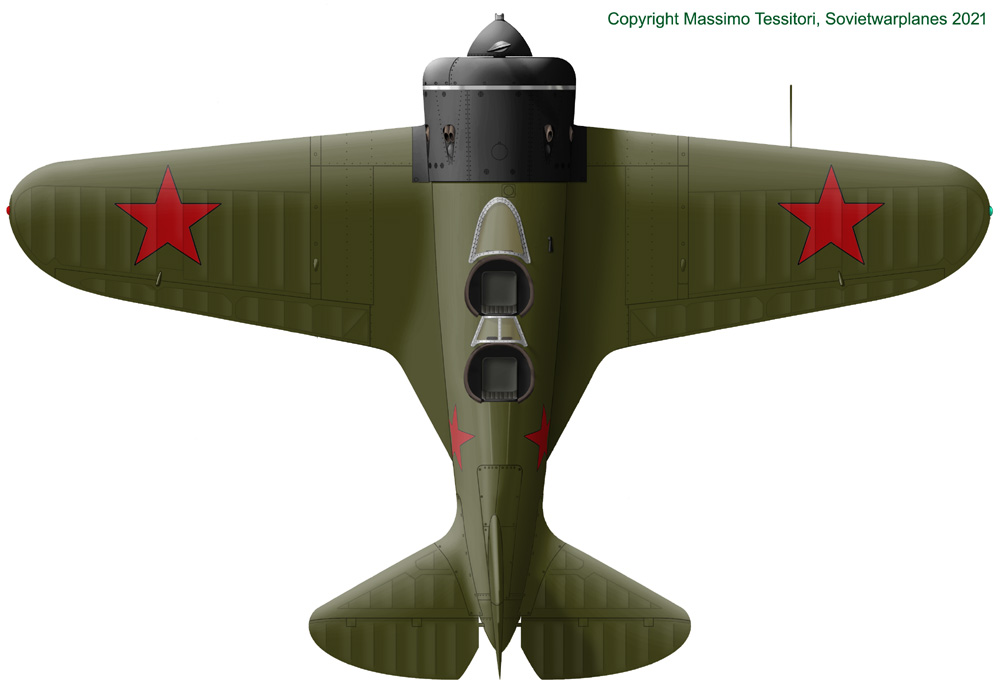
Above: the upper view of an early UTI-4 puts into evidence:
-
the same rear windscreen with central upper frame and flat topped back as on UTI-2;
-
engine M-25A, with the same cowling of I-16 Type 5;
-
counter-clockwise propeller with spinner (as on Type 5 and later);
-
tail fin twisted on the left of 2° (as on Type 5 and later);
-
reinforced wings and long ailerons as on Type 5 after the spring 1937, but without armament;
-
one refueling cap in front of the windshield.
Below: bottom view of UTI-4 with M-25A engine. We can see:
-
engine cowling as on I-16 Type 5;
-
long ailerons as those of Type 5 and late UTI-2, without flaps ( that were introduced in I-16 Type 10 in 1938, but never on any UTI-4);
-
no wing armament, nor ammo hatches between the cowling and landing gear, nor waste shells expulsion slots;

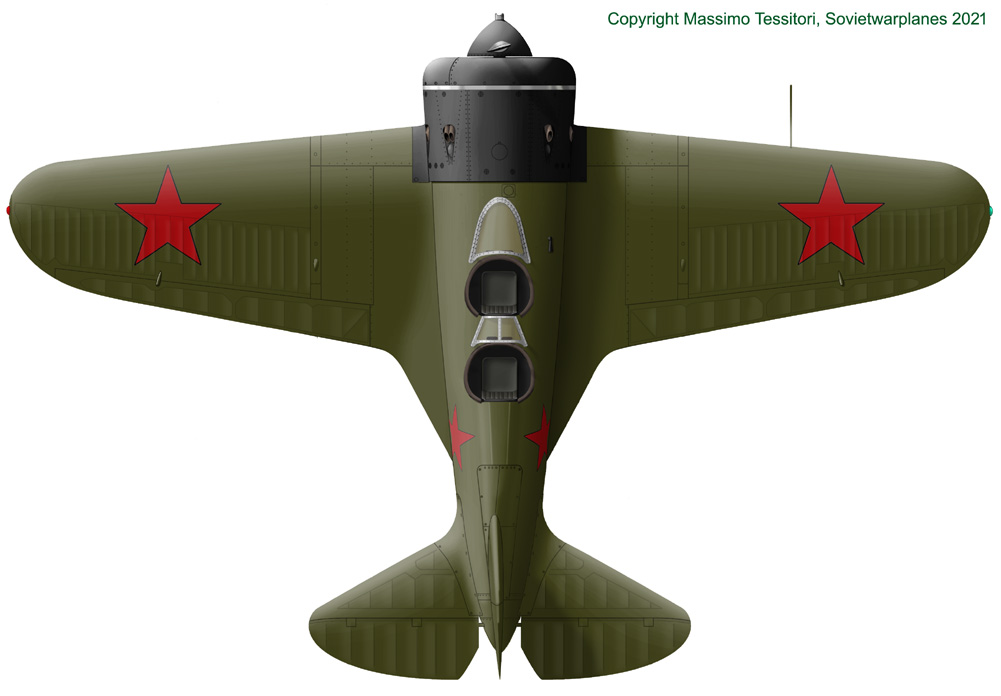
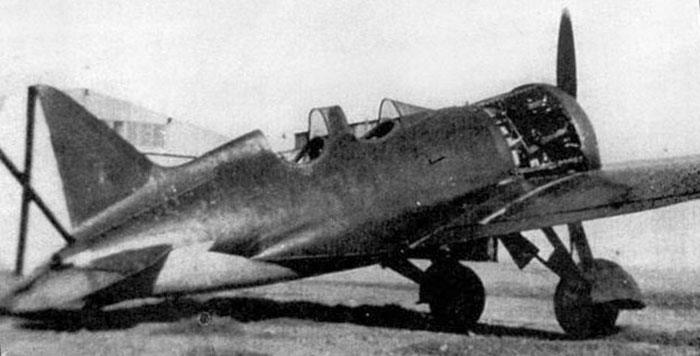
Four UTI-4s of very early production were quickly sent to the Fuerzas Aereas Republicanas (FARE), arriving on 8 July 1937 on the freighter Cabo Santo Tome. They were located at El Carmoli near Cartagena, at the high speed fighter training camp aside some single seater I-16s.
On the left:
A Spanish UTI-4 captured and remarked by Nationalists.
Note that the rear part of the windscreen looks strangely aligned, usually the top was parallel to the flight axis. Some photos suggest small differences in fixing the windshields from plane to plane.
It is not clear if some disuniformities in the color shown in this scan, particularly on the sides of the fuselage, are due to defects of the photo, to retouches or to some low contrast camouflage. The upper surfaces of the wings and tail are certainly very gloss, reflecting the fuselage, rudder and propeller.
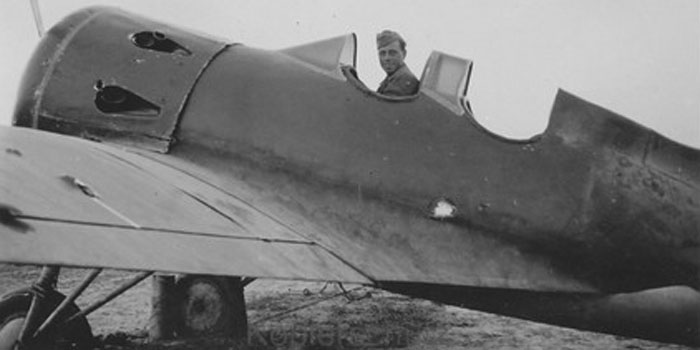
A good close up of the nose and cockpit area of an early built UTI-4, captured by Germans during Barbarossa. We see the pointed-backward exhaust recesses, as those of Type 5, and the canopies as the UTI-2.
The rectangular device under the rear windshield don's appear on photos of production UTI-4.
Note the footstep, on the left side only, with a visible scratch showing the bare metal of the small spring hatch closing it when not pressed by any foot.
Image from Scalemodels.ru
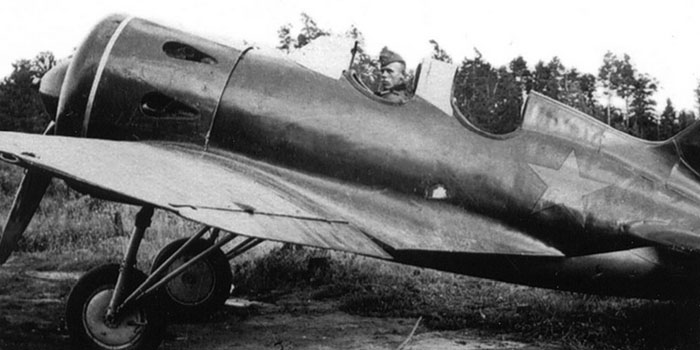
An early production UTI-4 captured by Germans in summer 1941.
The unusual I-16 windshield was probably a repair on the field with parts from another plane.
Note the worn footstep showing its shining scratch.
The landing gear was probably fixed in open position; no retraction cables are visible, despite the good sharpness of the image. The shock adsorbers were of splined type as those of I-16 up to Type 18, without scissor on the rear of the legs.
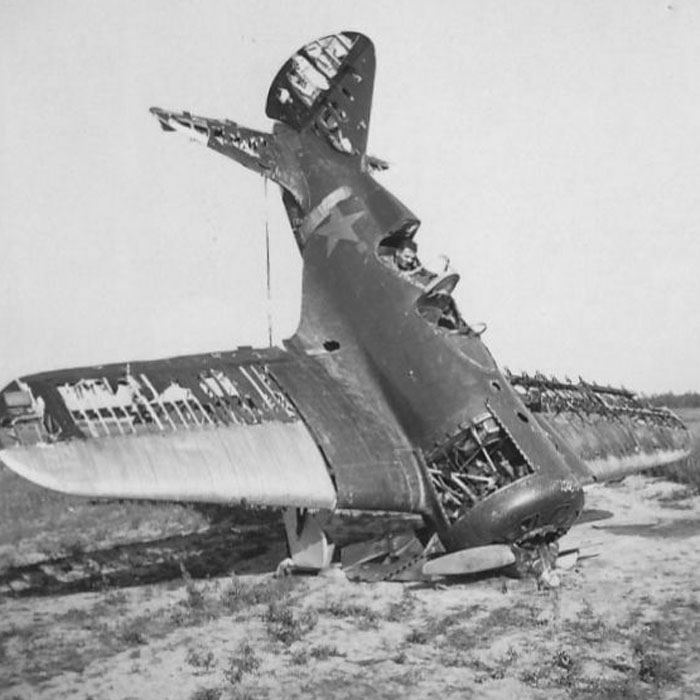
Another photo of an early UTI-4, recognizable for the rear windshield and the flat-topped rear headrest and back.
The removal of fabric from the wings show that the underlying structure is the same strengthened one introduced on Type 5 in spring 1937.
The fuel cap in front of the windshield is on the right side only, while I-16s had it on both sides.
Observing the paneling over the wings, one can see that UTI-4 weren't provided with hatches for installing machine guns.
The landing gear still have its doors, so it was likely kept retractable as on I-16s.
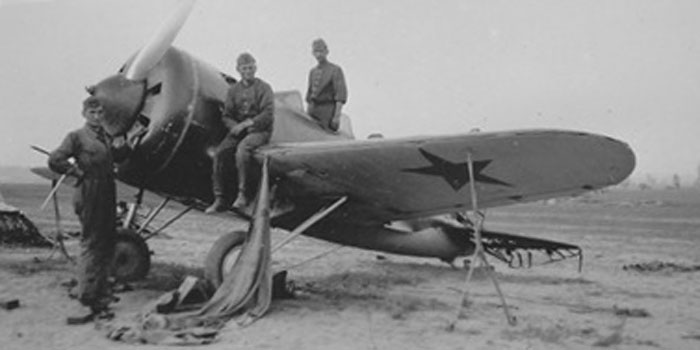
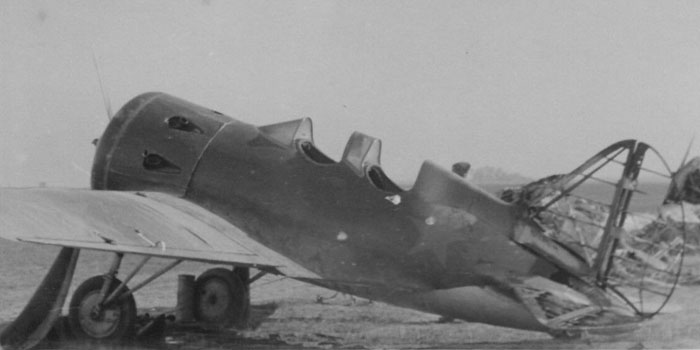
Two images of an early UTI-4 captured by Germans during Barbarossa.
The plane features a black cowling, typical of planes built in GAZ-21, and a landing gear without doors, possibly fixed in open position.
Many UTI-4 operated with the landing gear fixed in open position, but the landing gear bays were often left open.
Images from the web.
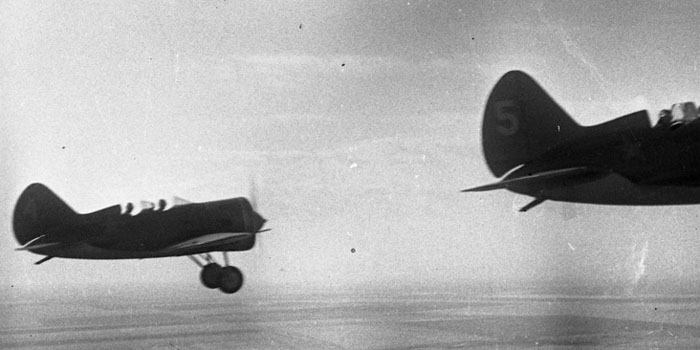
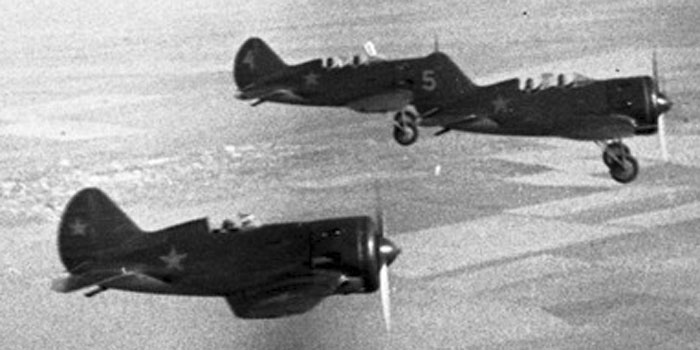
Two screenshots from a Soviet prewar movie showing a group of three planes taken from a fourth UTI-4.
The group includes:
- an I-16 Type 5 with a starlet on its rudder;
- an early production UTI-4 M-25A Yellow (?) 5, with black cowling and fixed landing gear;
- a mid production UTI-4 M-25A Yellow (?) 4; this plane shows a late type rear windshield.

A comparison between the rear windshield and backrest of UTI-2, early UTI-4 M-25A and late UTI-4 (below left) shows that:
- the windshields , headrest and back fuselage of the UTI-2 and early UTI-4 were identical; the back of the fuselage was flat;
- the late UTI-4 (with M-25V) had a conical one-piece rear windshield and a rounded back of the fuselage.
Some transition planes, still with the engine M-25A, had the later style windshield but the flat back, as visible on other photos.
Image composition by BLG.
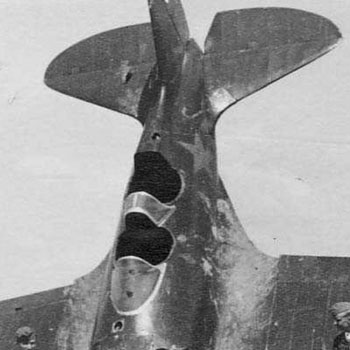
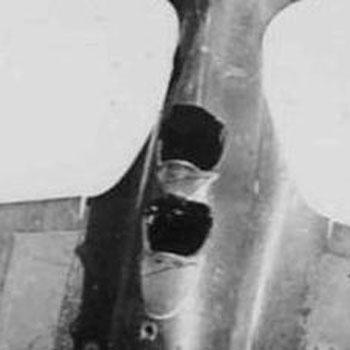
These top views allow a comparison between the early (left) and late (right) configuration of the rear windshield On UTI-4 equipped with M-25A.
The early one had an horizontal frame dividing two transparent side panels.
The later one was in one transparent piece, without a central strut, and the front headrest was much smaller to allow a better visibility.
The back seems still flat-topped on this plane, that has to be of intermediate production (difficult to say the year of building, 1937 or early 1938).
Some photos seem to suggest that the initial batches had a slightly smaller front windshield and that the rear frame appeared more vertical if seen from the side, but this could be due to imprecision on fixing it on the fuselage.
Images from the web.
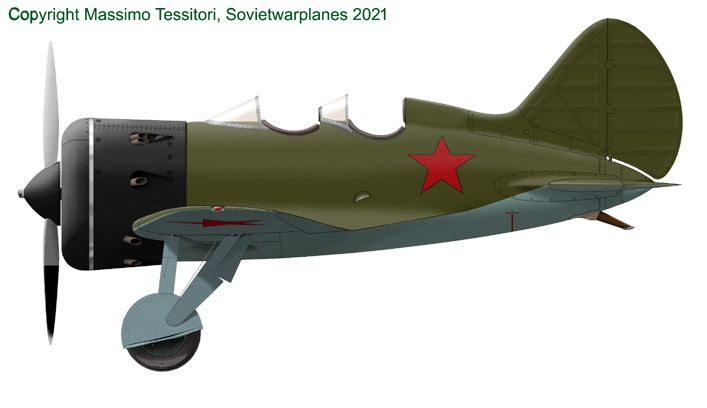
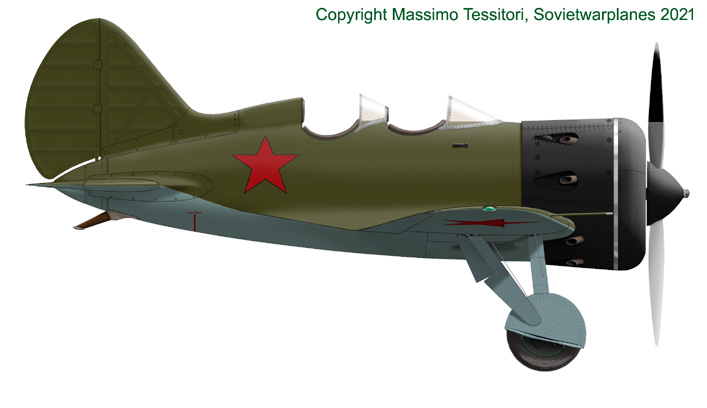
Left:
drawing of UTI-4 M-25A with the new rear windshield. This variation was probably put into production in early 1938, or could be the result of an update of existing planes with a new rear windshield.
Here the front windshield is represented in its more usual form, with the frame inclined when seen from the side and a bit larger than on very early planes.
Below: top view of this type. Usually the back was still angular, but some photos show transition planes with rounded top.
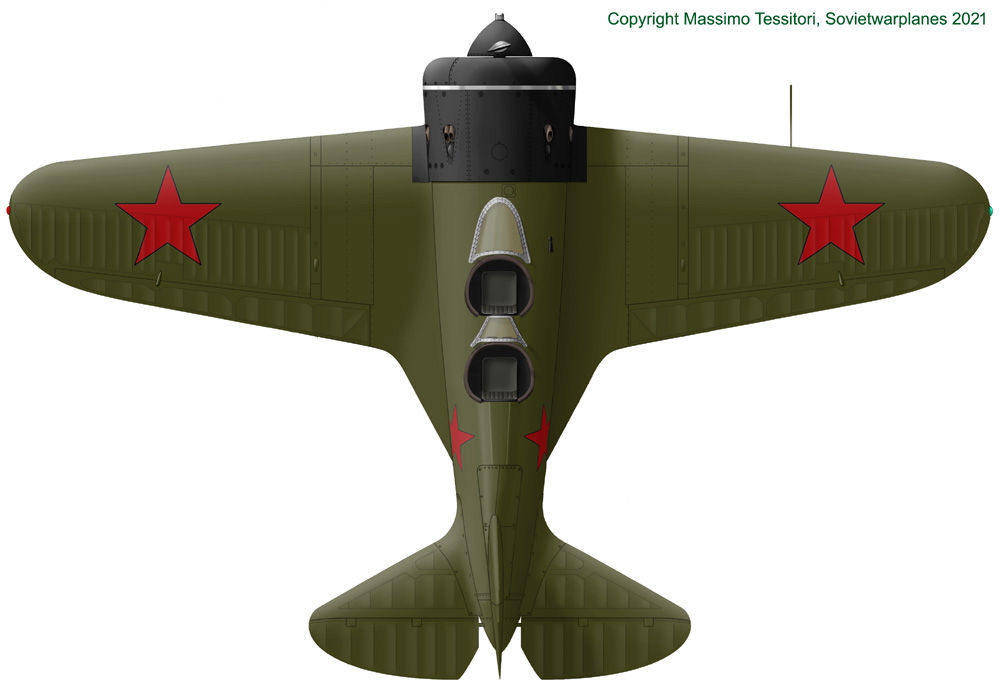
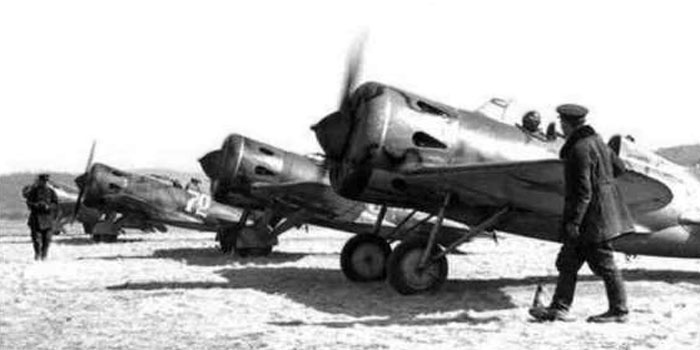
Line of different types of I-16, probably in Siberia in 1942.
The camouflage, thought to be green and light brown with black lines separating them, was typical of the Soviet Far East.
Some notes on the UTI-4:
- flat-topped back with an unusual support for a camera gun;
- the rear windshield was of mid/late type;
- the front windshield was from an I-16;
- the engine was an M-25A, and the cowling was of early configuration;
- the landing gear looks fixed, with the bays still open;
- probably the prop blades were painted black.
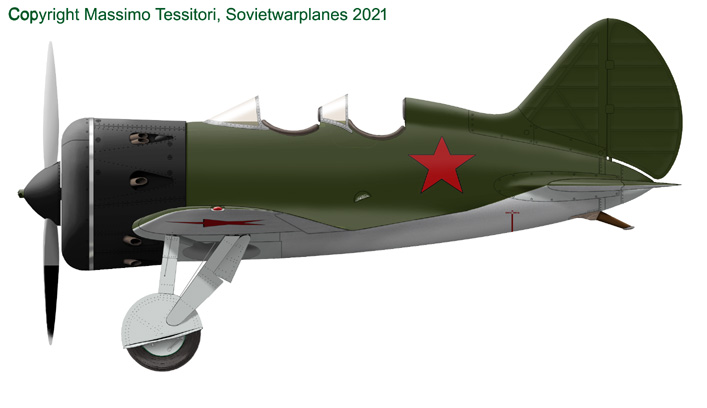
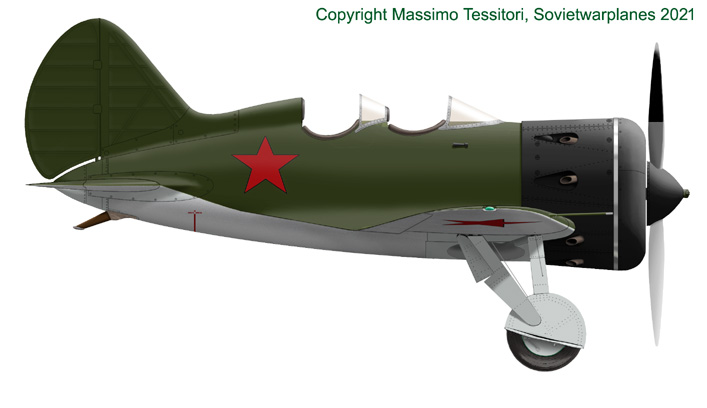
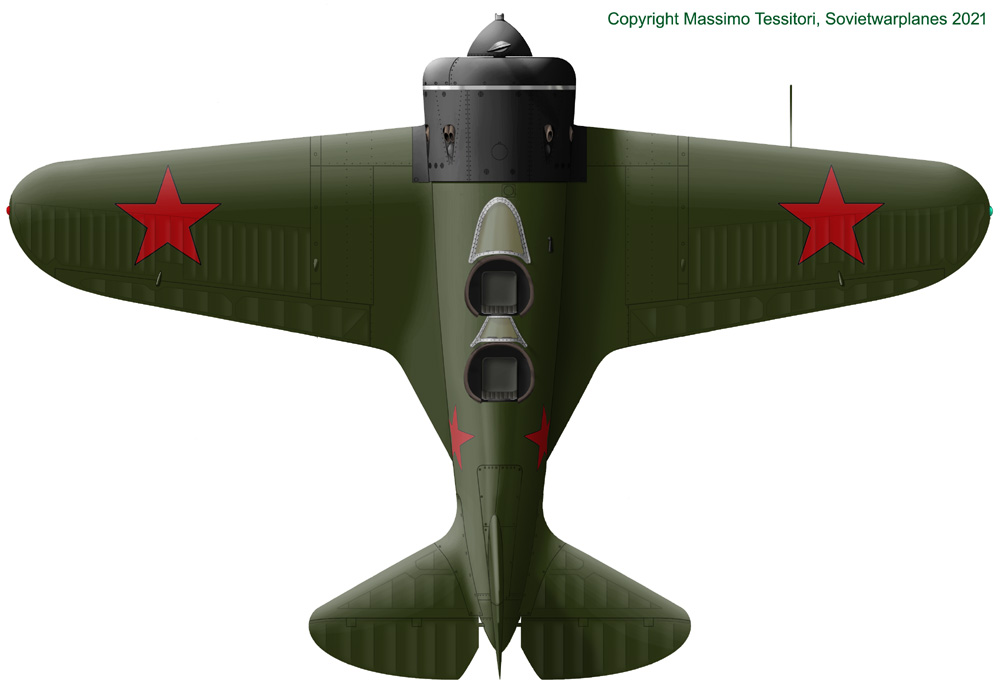
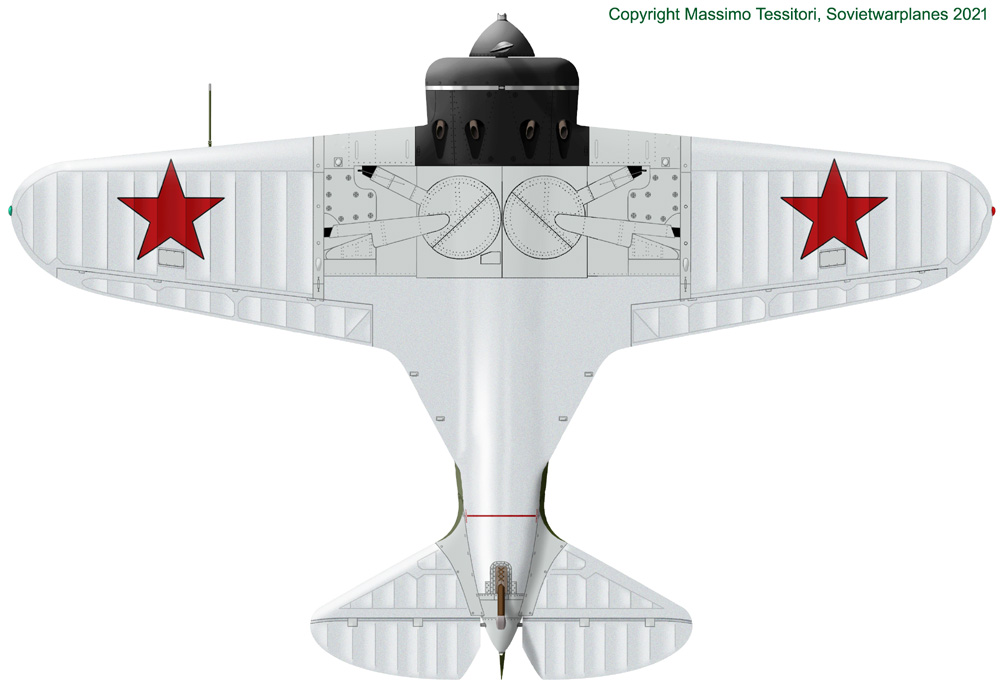
UTI- 4 with M-25V

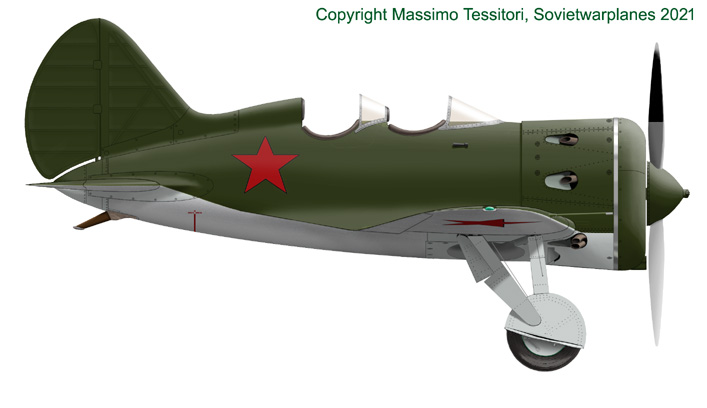
The production switched to a more advanced version equipped with the same M-25V engine of I-16 Type 10; probably the change was made in late 1938.
- M-25V engine with a T-shaped air intake on the lower part of the front plate;
- short side slots for exhaust stacks, as those introduced on Type 10;
- new lower part of the cowling with grouped exhaust pipes; it resembled to that of late type 10 and 17, but the openings for the retractable skis were replaced by simple slots as outlets for cooling air and a central circular outlet for the oil cooler;
- small front headrest and a tapered rear windshield behind it, without the central frame;
- section of the back rounded as on I-16s, no longer flat
- old type landing gear with splined rod shock adsorber, without the scissor, as on previous version; it can be recognized by the straight thin cover of the leg.
UTI-4s never received short ailerons, pneumatic flaps, provision for retractable ski gear, M-62 or 63 engines and other improvements adopted on the later types of I-16.
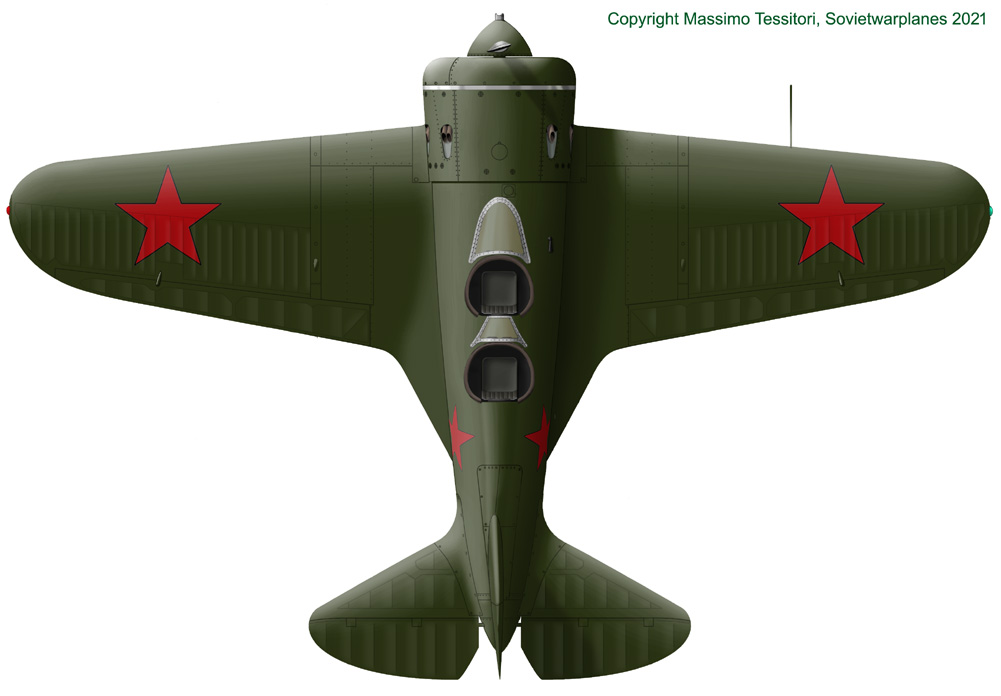
Above: top view of a typical UTI-4 M-25V.
One can see;
- short exhaust ports as those of Type 10;
- rounded back as that of all fighter versions of I-16;
- late type windshield.
Below: bottom view of a typical early production UTI-4 M-25V (probably late 1938).
One can see:
- T-shaped air inlet for the oil cooler of the M-25V;
- circular outlet for the oil cooler under the cowling;
- new lower part of the cowling with grouped exhaust pipes;
- simple slots as outlets for cooling air;
- old type landing gear doors as on previous types, with straight and narrow cover of the leg;
- tail wheel skid as on previous types.
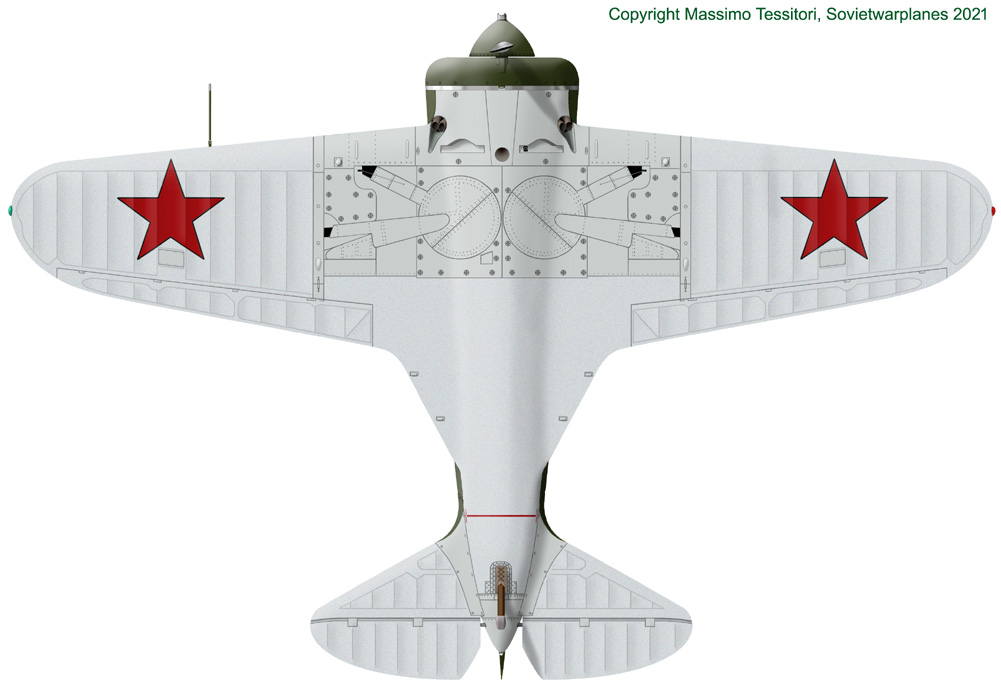
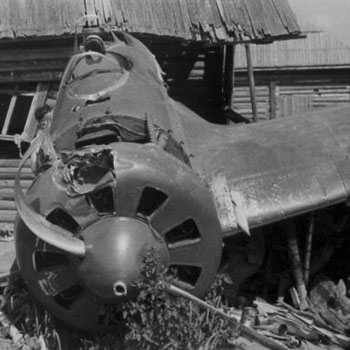
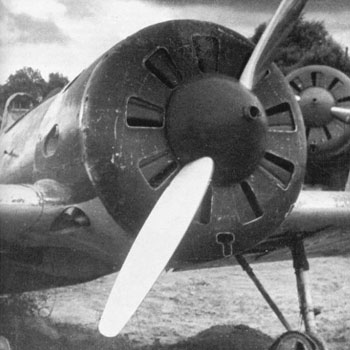
Two photos of UTI-4 from the front.
The first image gives a good idea of the front view of the windshields; the rear part of the fuselage is missing.
The second view shows well the intake of the oil cooler of the M-25V engine and the coupled exhaust pipes under the wing root; the cowling under the engine was similar to late type 10 and 17, but the ski recesses were always closed by plates that left only a thin slot as air outlet; retractable skis were never installed on UTI-4.
The landing gear leg is still of the type with splined shock adsorber, as on Type 10 and 17; all this suggests that the plane was built in 1938.
Images from the web.
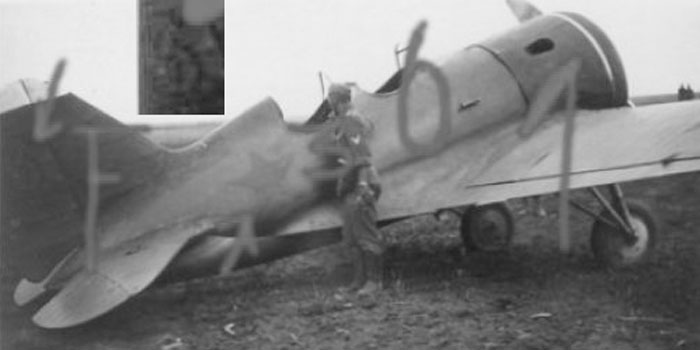
A UTI-4, probably equipped with M-25V, captured by Germans.
The photo let see some noticeable characteristics:
- the windshield from an I-16;
- the black cowling (suggesting that it was produced in GAZ-21);
- a white cap on the tail;
- a number, possibly a red 3 with black outline, barely visible on its rudder.
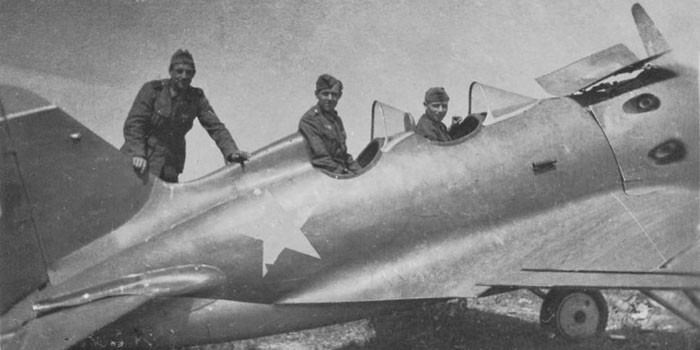
Image of late type UTI-4 captured by Germans. The rounded back is evident.
The plane was equipped with M-25V engine.
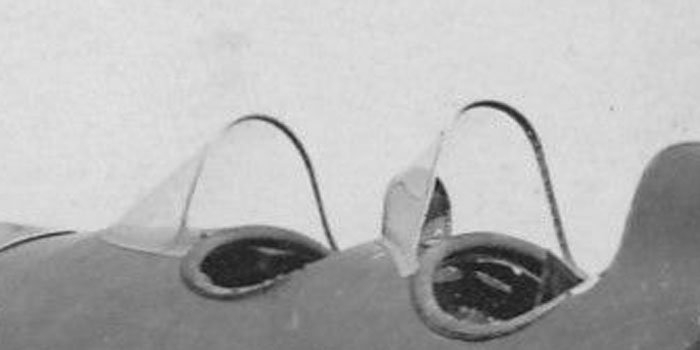
A detail of the mid/late production windshields and rounded back.
One can see some light from small windows intended to give light to the instrument panels.
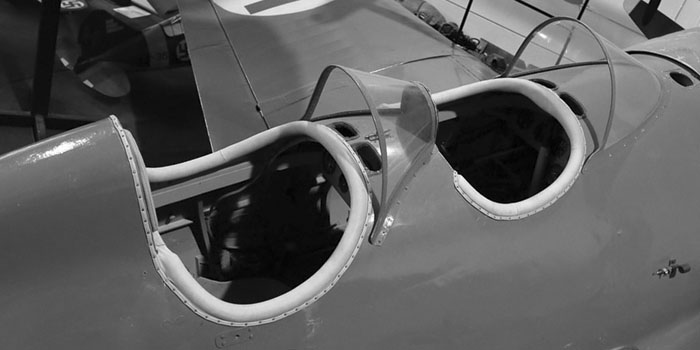
Detail of the windshields from the plane preserved in the Museum of Helsinki.
Note the windows under the windshields, useful both for giving light to the instrument panels and as hand grips.
Color photos of this plane show a light grey inside and emerald green instrument panels.
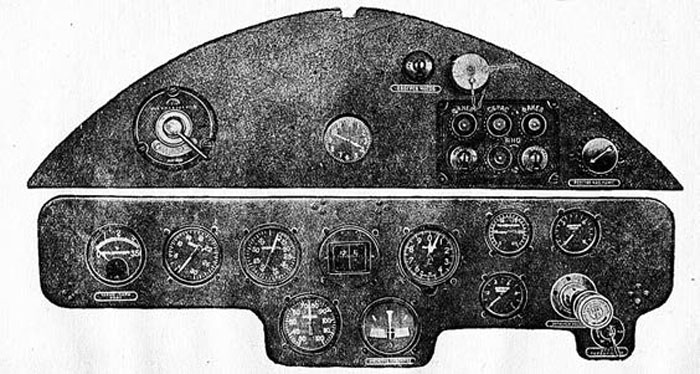
Aside: the front instrument panel.
Image from Istrebilel I-16 of Maslov.
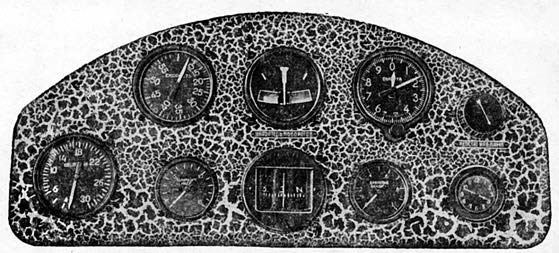
Aside: the rear instrument panel.
The strange spotty look is given by a black paint creating a craquelure that let see a red background.
Image from Istrebilel I-16 of Maslov.
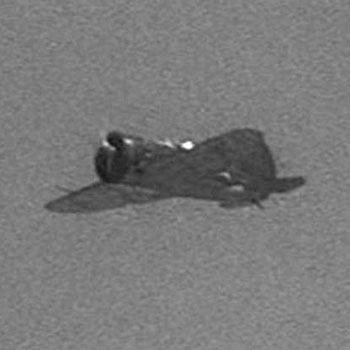
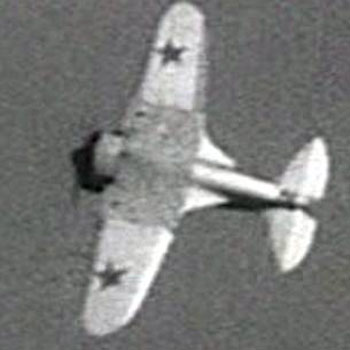
Two images from a movie of 1939 showing an UTI-4 UTI-25V in flight.
The finish of the undersurfaces in the 1938-39 timeframe, AII aluminum on fabric-skinned parts and AE-9 light glossy grey on metallic parts, is clearly recognizable.
The configuration of the lower part of the cowling, with all exhaust pipes collected into two side recesses and the central outlet for the oil cooler, identifies it as a late production plane with M-25V engine.
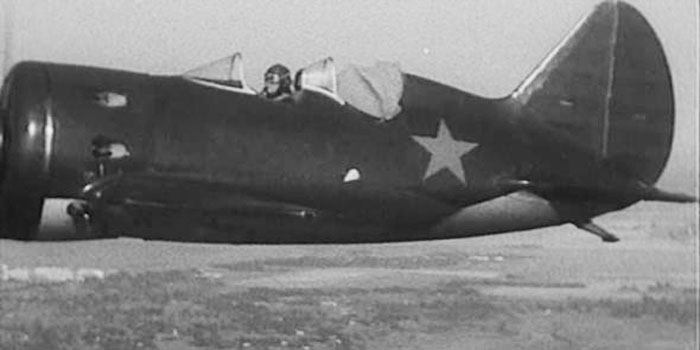
Left: an in flight plane with the lowered curtain. It is not the same plane of the photos above: its rear windshield looks a standard late type, starting with a small headrest.
Apart for the lowered curtain, we can see that it was a late production plane, with M-25V engine and the later configuration of the exhaust recesses.
The light color of the exhaust recesses seems to have been a production standard in some timeframe.
Below: two images of the same prewar movie. In the first one the pilot turns, showing the voice-bearing tube connected to his ear, but he is not using the voice-bearing mask to communicate with the pupil.
In the second image, the pupil has lowered a curtain for training to blind flight.
The plane shows an unusual shape of the rear windshield. We can't exclude that the whole thing was a mockup incorporating some parts of a real plane..
Images from Scalemodels.ru
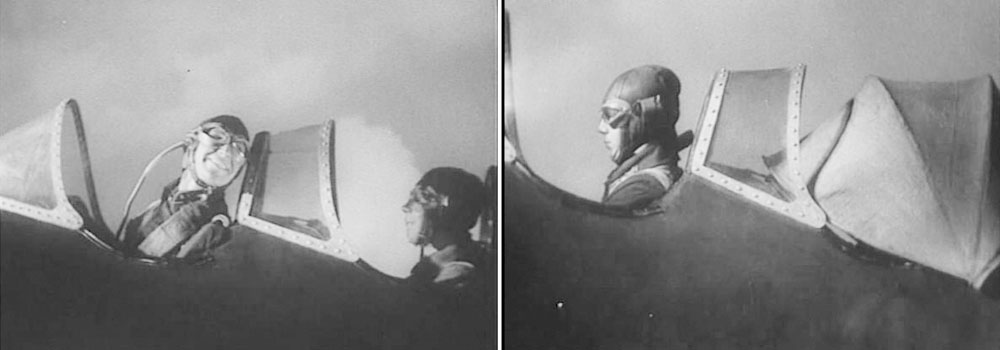
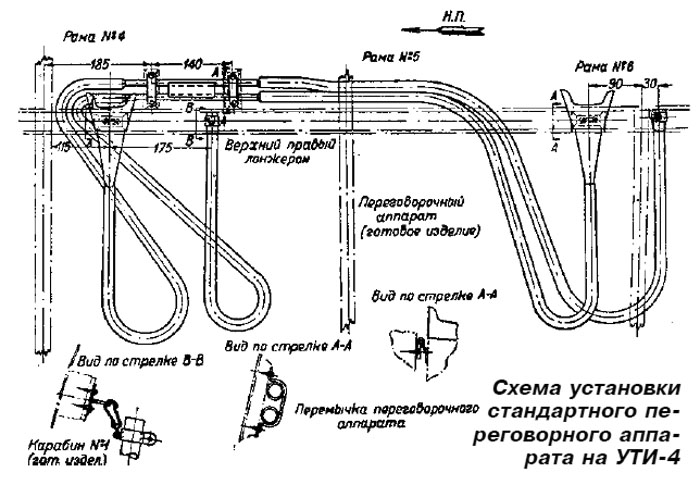
A detail of the voice-bearing tubes on the right side of the cockpits.
Image from Istrebitel I-16 of Maslov.
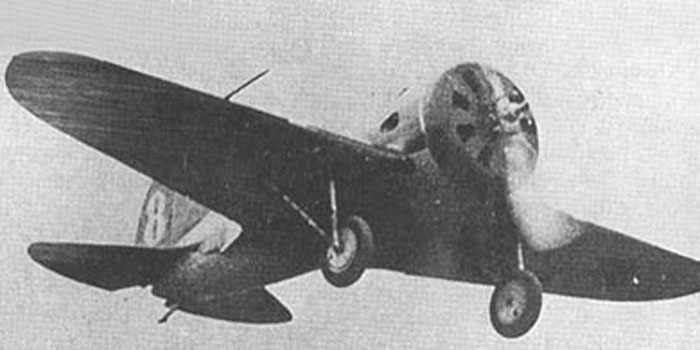
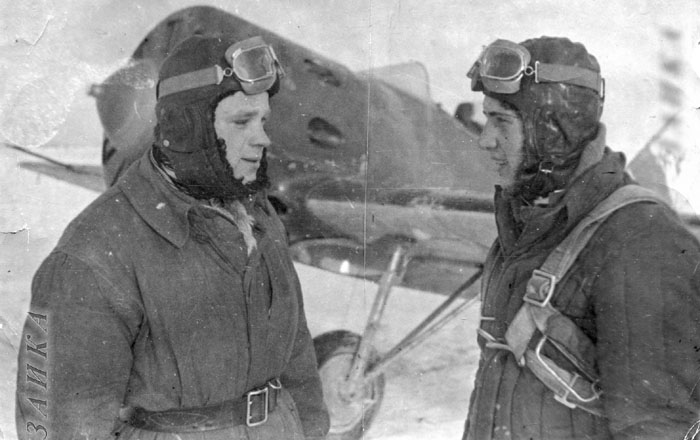
Image of an UTI-4 during the war after 1941.
Although the plane is covered by the pilots, it shows clearly the landing gear leg provided with scissor on its back. This anti-torque device replaced the splined profile on I-16 type 24 in late 1938, so it is likely that it was introduced into the production of UTI-4 in the same time or shortly after, in 1939.
It is likely that the planes with this type of landing gear were built with a tail wheel instead of the tail skid of previous models, but, in consideration of the snow visible on the photo, it is likely that it was replaced with a larger skid.
Another interesting characteristic visible from the photo is the white area on the tail, but it is unclear if it was a camouflage or a distinctive mark.
Image : archive Zaika
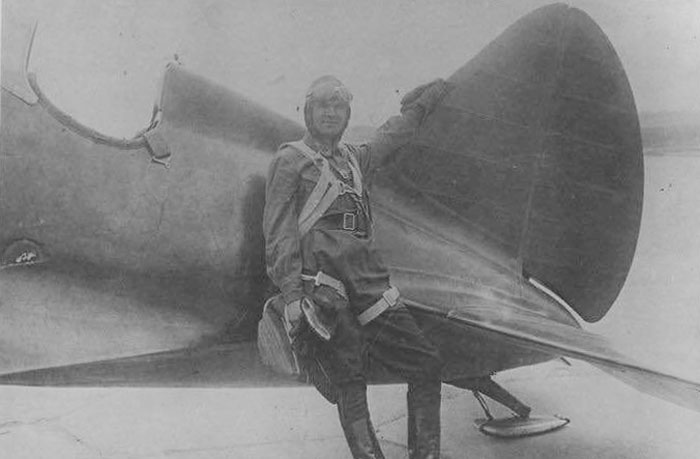
A pilot posing on his UTI-4.
Some details are visible, as the contour of the footstep, the seat belt and the tail ski for winter operations.
Image from Scalemodels.ru

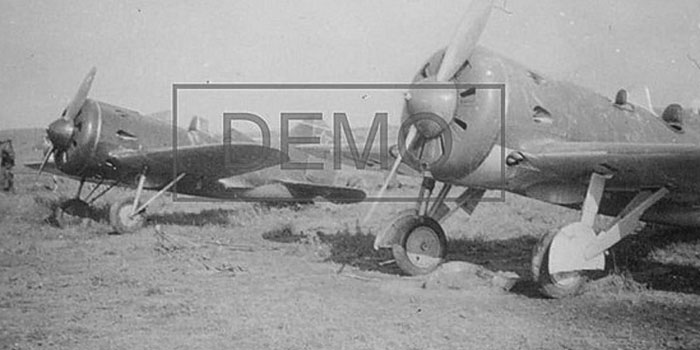
These images show planes of 46 IAP at Mlynuv airfield captured by Germans.
They show an interesting contrast between a fully standard late production UTI-4 M-25V with the usual green livery and probably silver-grey undersurfaces, and another tail-up one whose undersurfaces appear of a darker color, perhaps a medium blue-grey of the '30s.
Another photo of the same planes. The far one is recognizable as an early production plane, but the lower surfaces don't seem as dark as the previous image.
The shape of the landing gear cover of the closer plane is extended and slightly curved backwards, sure sign that the landing gear leg was of the type provided with scissors. Probably it was provided with a tail wheel as those introduced on I-16 Type 24 in late 1938.
Image from the web.
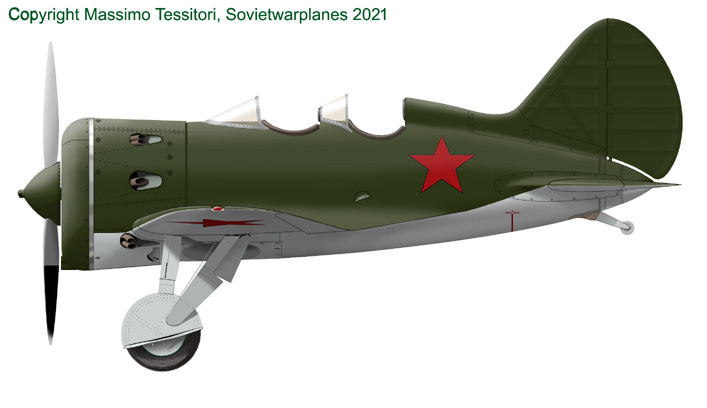
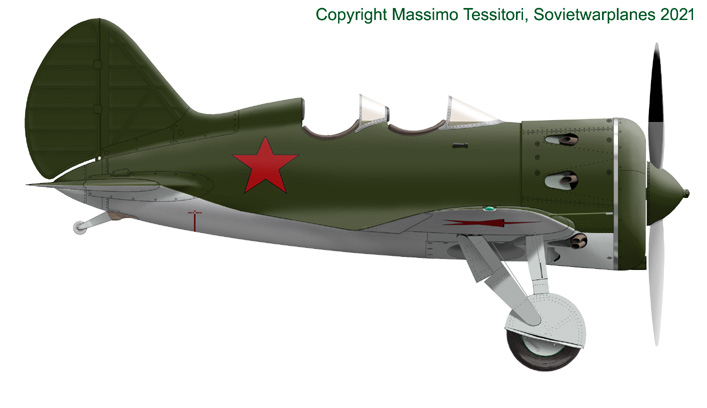
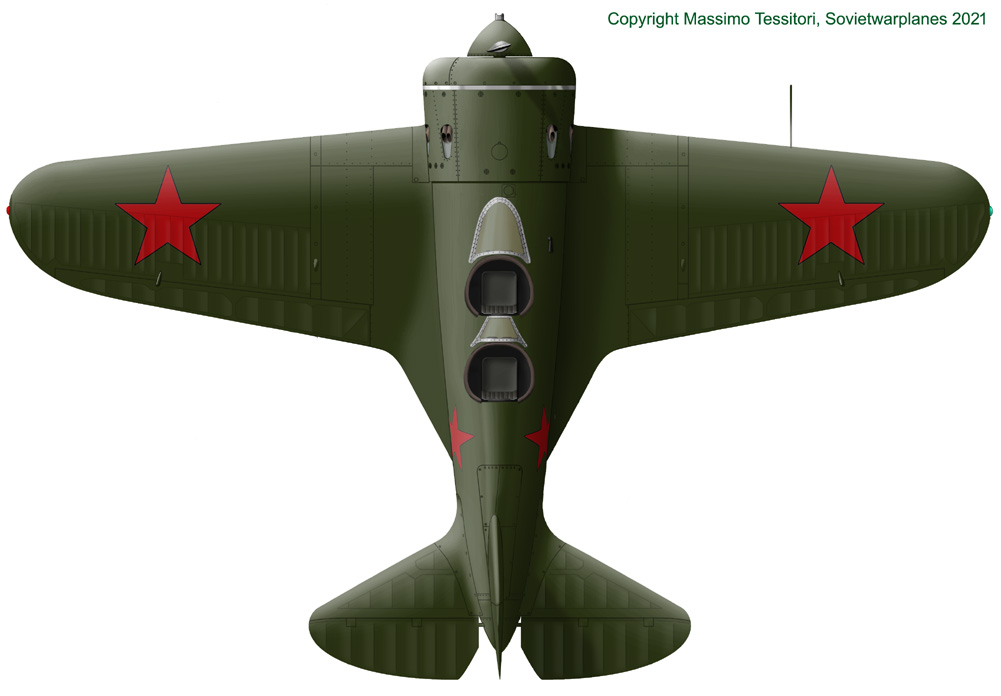

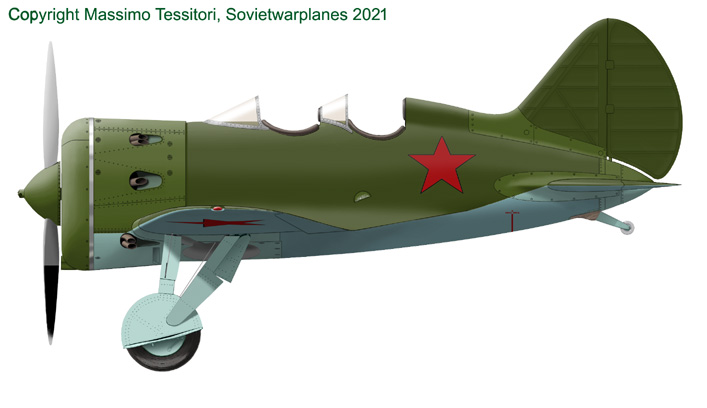


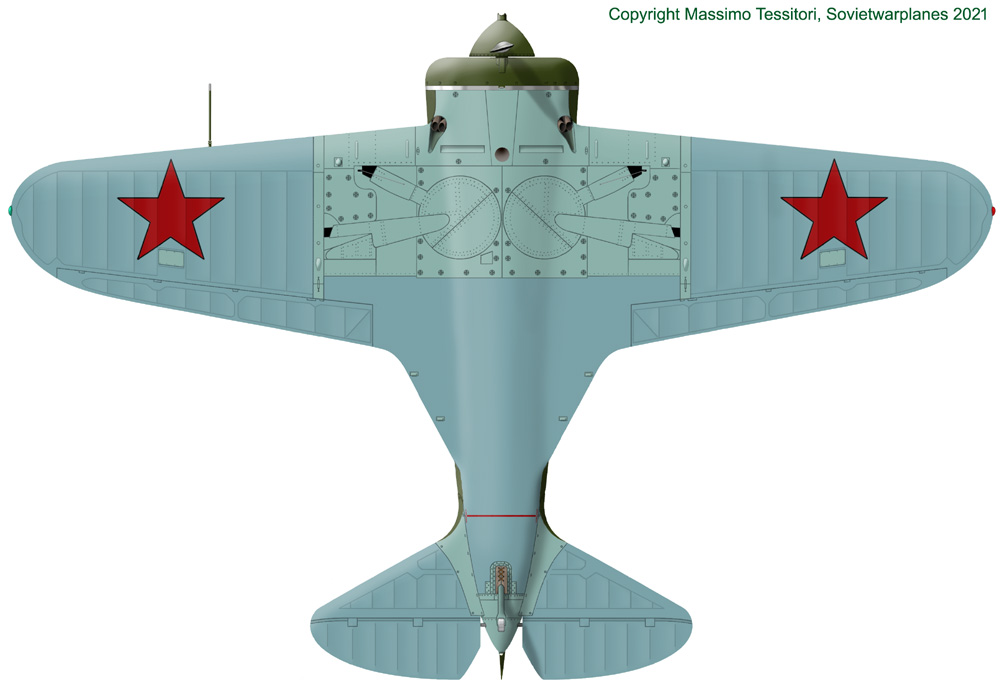
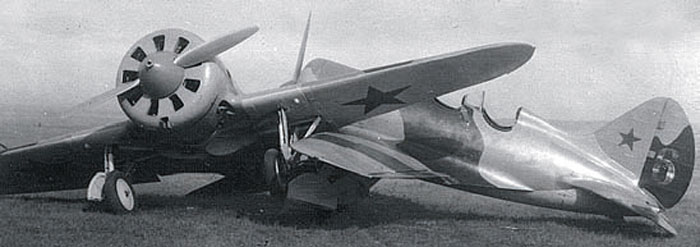
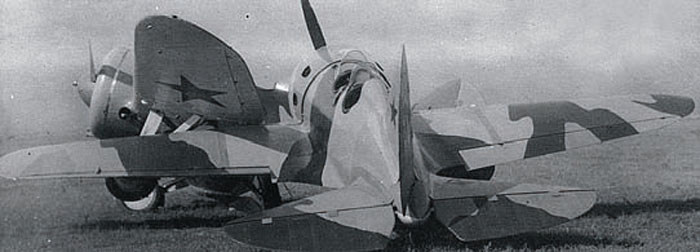
Photos of an accident involving two UTI-4 s/n 15153346 and 15153348 of 167th RESAP on 2 July 1941.
Both planes were built in Zavod 153.
A noteworthy characteristic is the strongly contrasted three shades glossy camouflage, probably based on the scarcely applied templates of NKAP of spring 1941, while the positioning of the emblems on the tail and lower wing surfaces was prescribed in June 1941, and integrated with a further star on the fuselage sides a month later.
A reconstruction of the camouflage can only be speculative. Timin suggests black, camel and AII green.
In my opinion, the intermediate shade is too light to be AII green, it could be a brownish grey that was included between the paints experienced in 1940/41and appearing in some schemes of the directive of spring 1941. It could also be that the darkest color was a dark green, because a camouflage without any green would be strange.
Images from M-Hobbt 7/2018, article of M.Timin
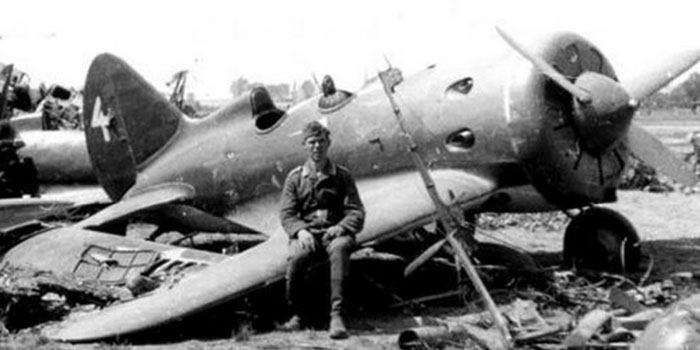
An UTI-4 M-25V captured by Germans.
The image shows the bort number 'White 4' on the tail.
The tail gives the impression to be dark, but this could be due to the light direction and to a difference in the shade of green between fabric-skinned and metal parts, visible on many photos of Soviet planes of that timeframe.
Image from Scalemodels.ru.
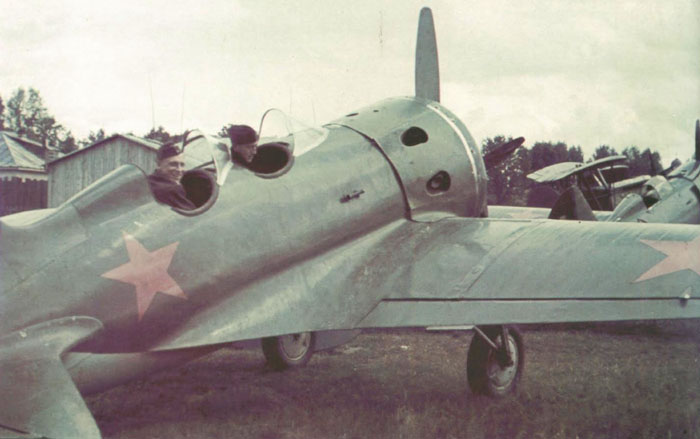
Rare color photo of an UTI-4 M-25V captured by Germans, still in Soviet markings.
The trim tab on the aileron is noteworthy.
The soldiers were probably of a Luftwaffe unit, with taubegrau uniforms.
Image from Scalemodels.ru.
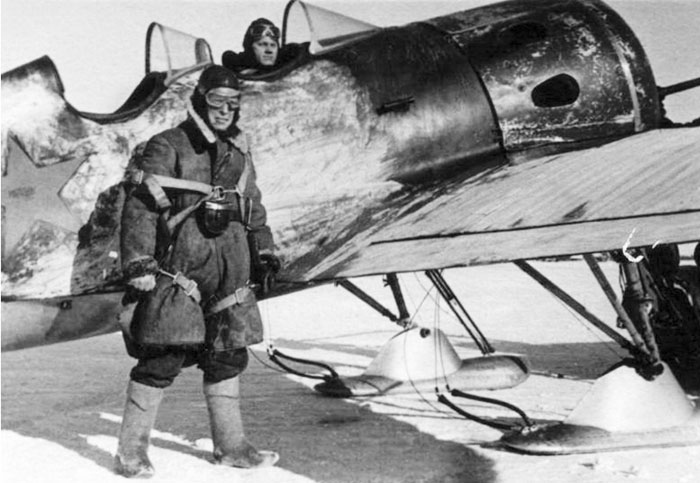
Image of an operative UTI-4 M-25V of 43 SAP (mixed aviation regiment) in 1942. The plane was equipped with non-retractable ski gear.
Probably it is a late production plane, with landing gear legs with scissors.
The white winter camouflage is noteworthy. Apart for this, the upper surfaces of the plane were likely painted with AMT-4 matt green.
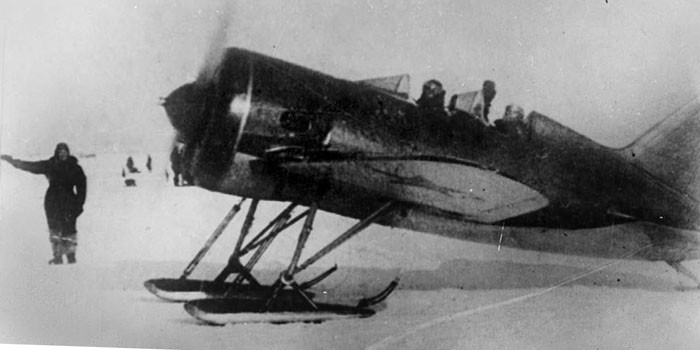
Another UTI-4 M-25V during the GPW. It is unclear if the plane was camouflaged, or painted in an uniform green top.
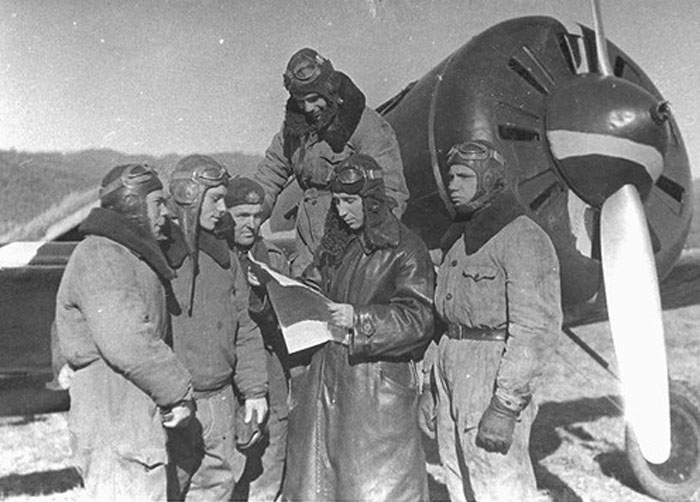
Left:
image of an UTI-4; the outline of the front cockpit is vaguely vosible under the pilot's arm.
The plane shows an amazing sort of winter camouflage made with few curved lines, visible on the nose, fuselage side and wing.
Unfortunately the photo doesn't allow a more accurate description of the plane.
Image from Scalemodels.ru.
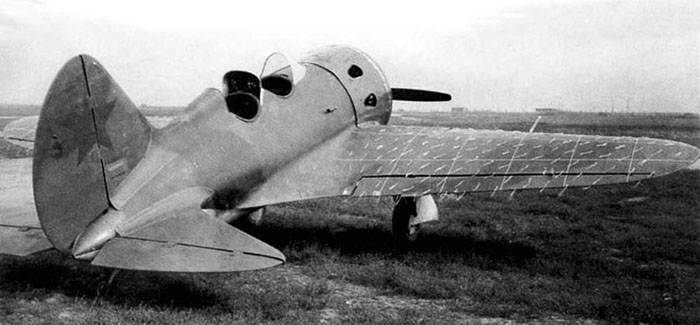
UTI-4 M-25V employed for researches on the stall characteristics of I-16 at TsAGI in 1942 or 1943. White small wool stripes make the airflow visible, and white lines drawn on the wing surface are for reference.
The rear windshield appears unusually squared and not transparent; probably cameras pointed on the wings surfaces were installed there.
The black-green camouflage, very usual for other types of the timeframe 1941-43, was very unusual on an UTI-4.
Image from the web

UTI-4M-25V of 33 IAP PVO captured by Germans at Pruzhani airfield in June 1941.
An interesting detail is the presence of rails for some curtain for blind flight training.
These rails are different from those seen on photos of other UTI-4s, and could have been locally made.
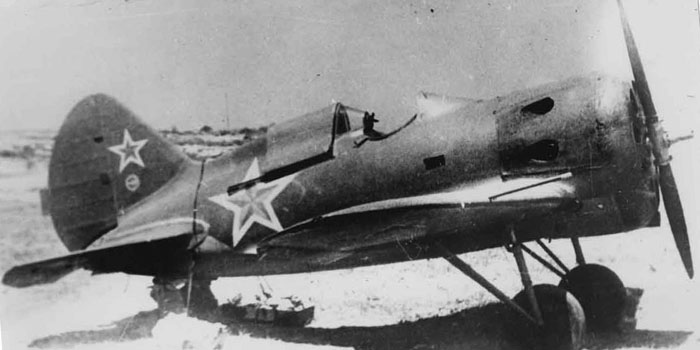

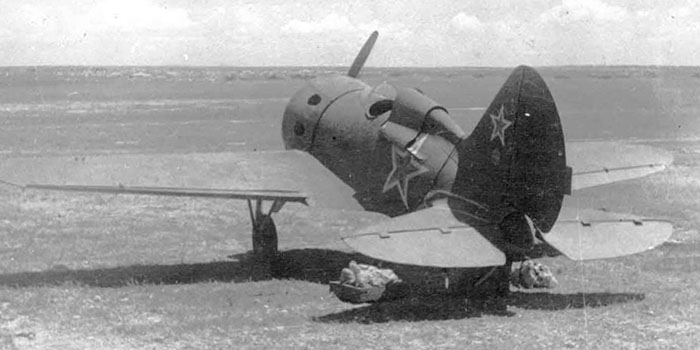
Three images of an interesting UTI-4 M-25V. The photos show:
- a sliding curtain, possibly for blind flight training or as liaison plane; it is unclear if this installation was unique or other similar ones existed;
- stars on the fuselage and tail are the so-called 'kremlin stars' (two shades of red?), while those under the wings are probably simply red;
- all stars have white-red outlines denoting that the photos were taken after summer 1943;
- unusual trim tab on the rudder;
- small emblem on both sides of the fin, possibly a blue circle with the winged propeller of the VVS and some inscription all around;
- probably uniform green AMT-4 upper surfaces and light blue AMT-7 undersurfaces, with some dark repaintings on the fuselage sides;
- the fillet of the stabilizers seem sealed with adhesive tape;
- propeller without spinner, with black painted blades;
- lack of landing gear covers;
- probably retractable landing gear, because the retraction cables look visible on the photos.
Some sources shows these as photos of the ground attack derivative UTI-4b, but despite the superficial resemblance to the drawings of Maslov, the photographed plane hasn't any armament and is clearly a two seater.
Images from the web

An UTI-4 M-25V captured by Germans in 1941.
The position of the number suggests that the plane was remarked after the war's outbreak; apart the red star visible on the fuselage, it is likely that another one was painted on the tail, as wartime use.
The rear canopy is contoured by a thin frame of metal wire; this was a guide for a sliding curtain for blind flight training. The curtain itself is visible on the other side in folded position.
Image from Scalemodels.ru
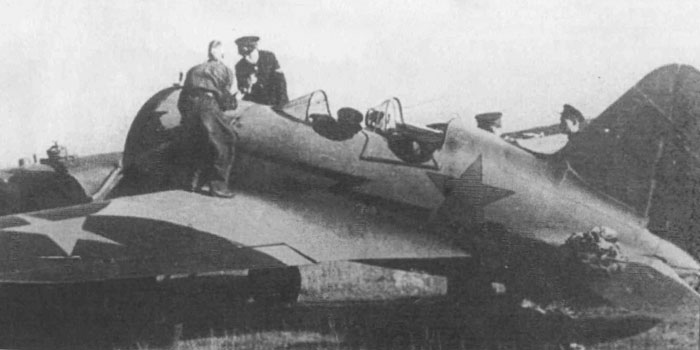
A nicely painted UTI-4 of 2 GvIAP of the Northern Fleet in summer 1942.
The overall color could be light grey, with very dark blue or black wings, front, stabilizers and elevators and bolt.
Apart for the obvious red stars on the wings and fuselage, a smaller black-contoured red star looks visible high on the tail, centered on the hinge line of the rudder.
Image from Red stars of Geust, Keskinen, Stenman.
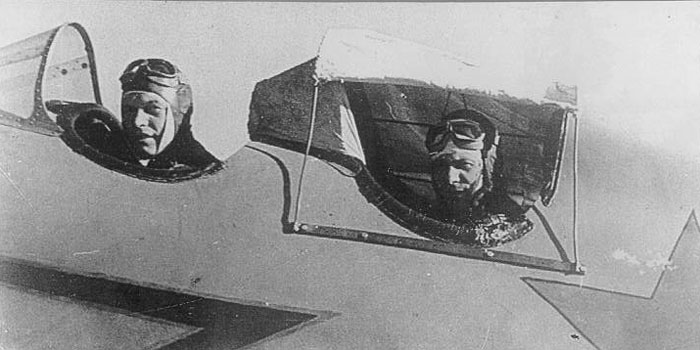
Another shot of the same plane shows some details of the partially closed curtain.
The struts are connected to a flat bar bolted to the sides of the plane.
A cover is fixed outside the rear windshield.
The trasparent of the front windshield shows sone unusual junctions, probably repairs.
There is a lighter outline, probably red, around the dark lightning painted on the fuselage.
Image from Scalemodels.ru
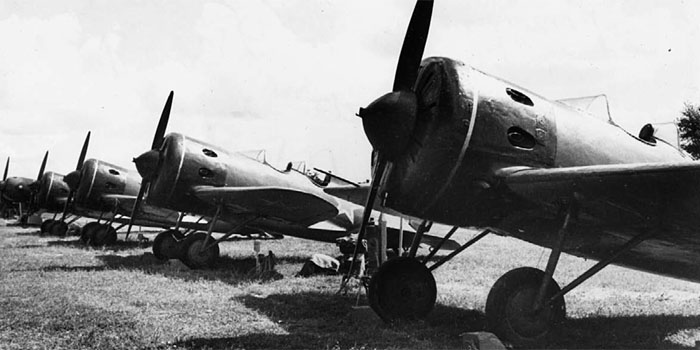
The UTI-4 was kept in service in the VVS up to 1946.
This photo, probably of 1944 or 1945, shows a line of late UTI-4, but the last plane of the line is a La-7.
The planes are marked with red stars with white and red outlines, as standard after the August 1943.
The livery was probably with AMT-4 green upper surfaces, AMT-7 light blue undersurfaces and AMT-6 black cowling and propeller.
Observing the landing gear legs, one can see the scissors introduced in production probably in 1939, following their introduction on I-16 Type 24/28 (and probably on late Type 18/27).
There are visible retraction cables, so probably the landing gear was kept retractable.
Image from Istrebitel I-16 of Maslov
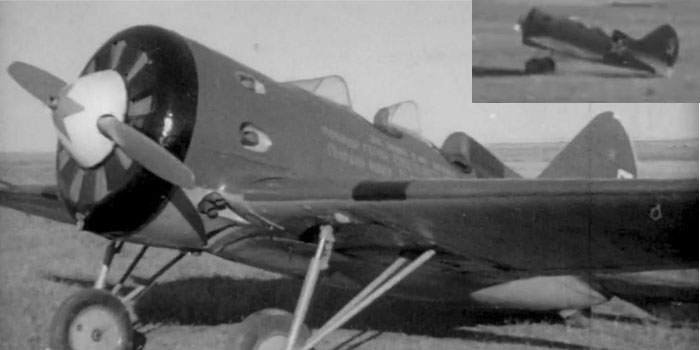
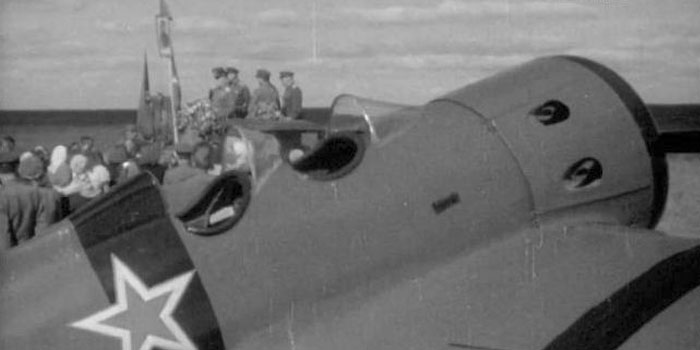

Some screenshots of a ceremony involving an UTI-4.
Probably the images are from a flight school around 1946.
The plane itself has interesting characheristics:
- UTI-4 M-25V of late production;
- landing gear leg with scissors;
- closed wheel bays, but the bays of the legs were left open and the retraction cables are still there;
- left slot under the cowling shaped as on Type 29; perhaps the curved cut was made to have better access to some device for the maintenance of the engine;
- painted with gloss or semigloss green AGT-4/light blue AGT-7 livery ;
- black stripes in the fuselage, wing uppersurfaces and front of the engine (excluding the shutters);
- black rear of the prop blades;
- black venturi;
- red stars with white-red outlines on the fuselage and probably below the wings;
- white spinner with red star;
- white number 5 and white contour of the rudder;
- possibly red front of the propeller and shutters (could also be green or grey, they don't seem bare metal or aluminum);
- inscription on the left side saying: This plane was flown by triple hero of the Soviet Union Guards major I.N.Kozhedub.
Images from Scalemodels.ru
German UTI-4
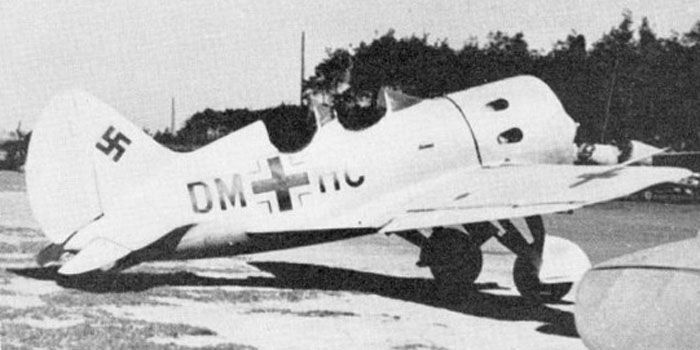
A number of captured UTI-4 and I-16s were allocated to Luftwaffe training units and utilized in late 1941 and 1942. Being tricky planes, their service involved many accidents, some of which were lethal.
Right: photo of plane coded DM+HC, probably at Reichlin airport.
It is a late production plane, with M-25V engine and a tail wheel as I-16 type 24 and later.
It seems painted in an uniform light color, probably yellow (other sources suggest light grey).
The photo shows a part of the elevator of another close UTI-4, that seems painted with a somewhat darker color, possibly RLM Grau 02.
Image from the web
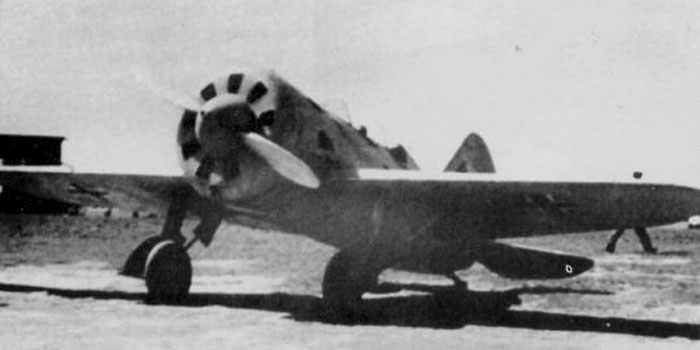
Photo probably of plane DM+HC. The German crosses are well visible, but we can't see letters painted under the wings.
Image from the web

Plane DM+HD was not captured by Germans during Barbarossa, but it was one of the UTI-4 sent to Spain, captured by Nationalists and transferred to Germans. So, it could be an early UTI-4, perhaps updated in a second time with pieces of other planes, as the tail wheel suggests.
It crashed near Reichlin, but the pilot survived.
The image seems to have been retouched to hide the swastika on the stabilizer.
Image from Polikarpov fighters in action, Squadron Signal.
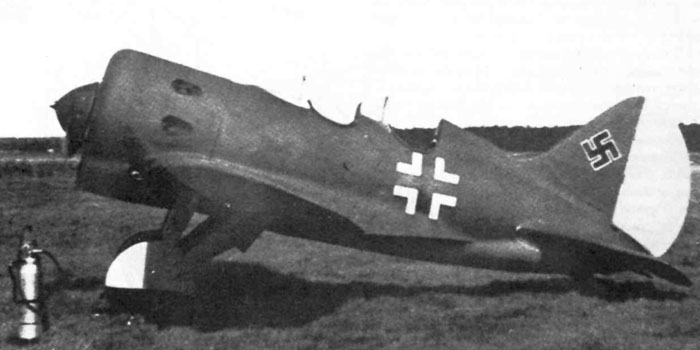
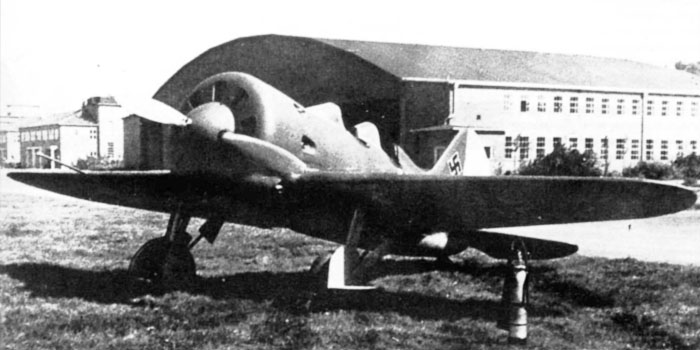
Another UTI-4 M-25V in German markings. This could have been taken on the Brandenburg-Briest airport.
The finish of this plane looks dark green, probably RLM 71, probably over yellow undersurfaces. The rudder seems white.
Images from "Polikarpov I-16, l'histoire d'un avion révolutionnaire " Kytka Ed.
Finnish UTI-4

During the Continuation War, a single UTI-4 was captured by advancing Finnish troops on 8 September 1941in the river Svir area.
Here we see the UTI-4 just after its capture in a wooden hardstand, surrounded by Finns.
The tail of the plane appears damaged, as well as the spinner and propeller, and the left wing seems missing.
Note the raised curtain for blind flight training on the rear cockpit.
This plane was used by the Ilmavoimat and is still preserved in the Museum of the Finnish Air Force.
Image from Ilmailumuseo
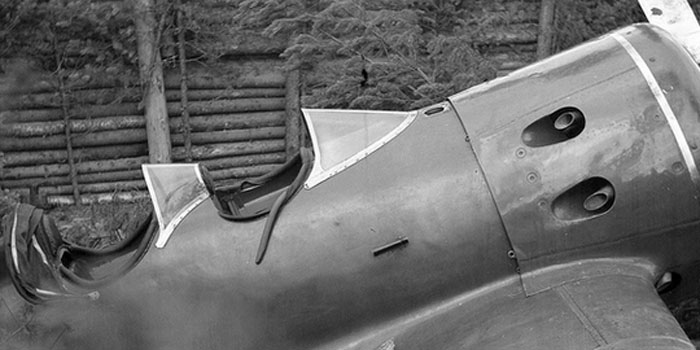
A detail of a late production UTI-4 captured by Finns.
The close up view of the plane, still with Soviet markings, shows many details, including the raised curtain on the rear cockpit.
Image from Sa-Kuva archive.
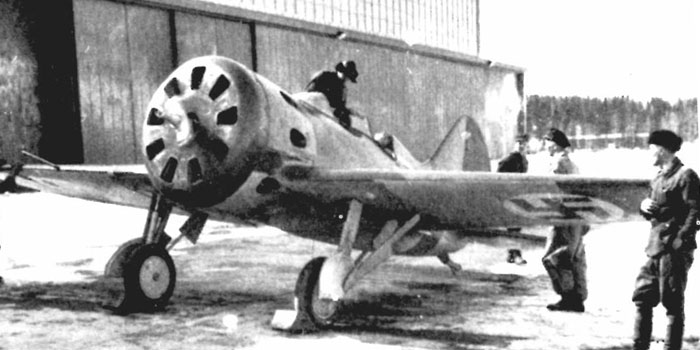
An image of the Finnish UTI-4. At first it carried a black VH-22 code on the fuselage; on 28 November 1941 this was changed to Black UT-1.
The plane was repainted with olive green upper surfaces, light blue undersurfaces (perhaps silver-grey in a first time) and yellow bands on the fuselage and under the wingtips; probably the front plate of the cowling was painted yellow for some time, then it seem repainted with darker olive green.
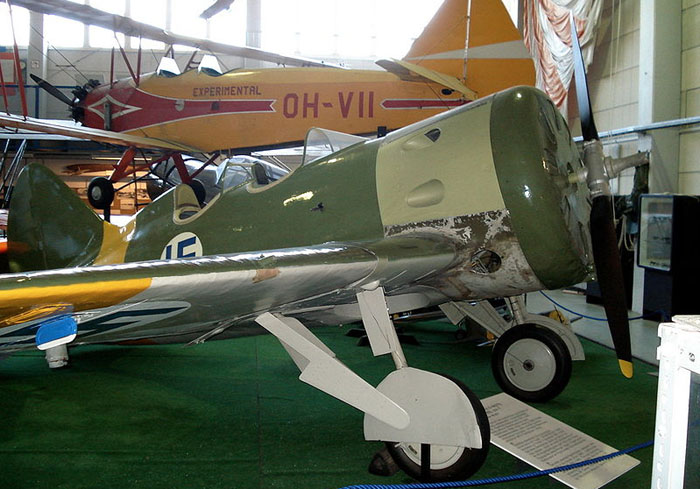
The same plane is still preserved in the Museum of the Finnish Air Force, excellent conditions (apart for the painting of the cowling and the lack of the engine). It is the only UTI-4 still existing in the world.
Image by https://commons.wikimedia.org/wiki/User:Balcer~commonswiki
https://commons.wikimedia.org/wiki/File:Polikarpov_uti4_helsinki_1.jpg
Other walkarounds of this plane:
https://abpic.co.uk/pictures/model/Polikarpov%20I-16%20UTI-4
http://walkarounds.scalemodels.ru/v/walkarounds/avia/before_1950/uti-4/
Chinese UTI-4
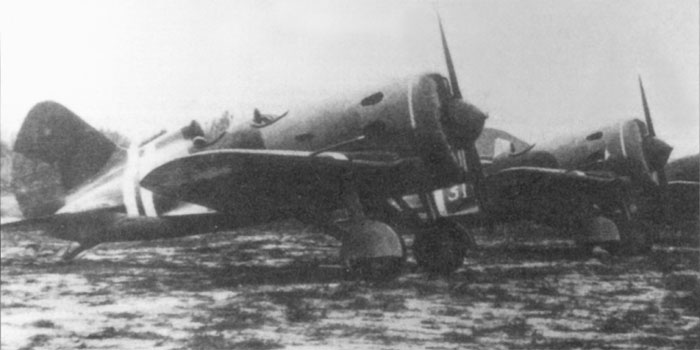
During 1938, some UTI-4 M-25V were delivered to China to train her pilots for I-16 fighters, and allocated to the Air Force Academy at Kunming. Later, the most part of them were transferred at I-ning, where a Soviet-style flight school was established.
In 1940, the Second Aircraft Manufacturing Factory of the Chinese AF, located at Nanchuan, started to produce a licensed copy of the late UTI-4, named Jung-28A. This plane remained in production up to 1943.
Image from Polikarpov fighters in action pt.2, Squadron Signal.
Polish UTI-4
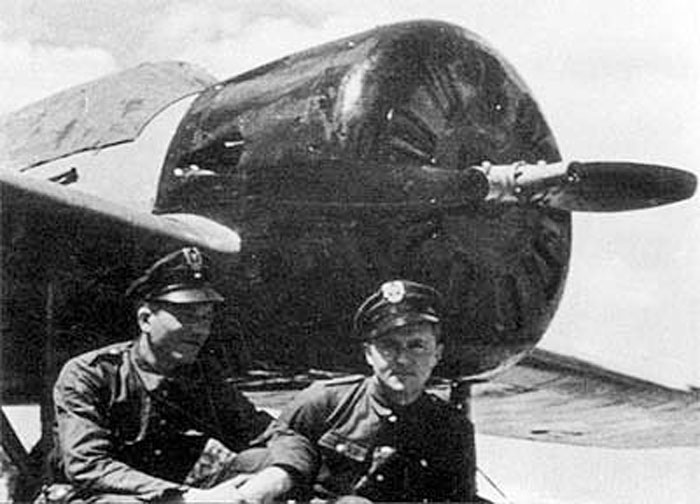
The Polish Air Force had two UTI-4s. Both aircraft had Polish identification marks.
One of them was given to the 15th Independent Air Reserve Regiment in November 1944.
The second one was used as a liaison plane in January 1945, and in October 1945 it was transferred to the Polish Air Force engineering school in the city of Zamosc where it was maintained in flight condition up to 1947. After the school was transferred to Boernerowo, the plane was used as a decoration for the entrance gate, remaining in good condition. In 1949, when the school returned to Zamosc, this UTI-4 was scrapped.
Left: photo of the early type UTI-4 at the engineering school. We can distinguish some light coor on the fuselage, a slightly darker one on the wings, the black nose and a polish national mark under the wing.
Image from Polikarpov I-16 in action, Squadron Signal.
http://i16fighter.aviaskins.com/operational-history/captured-minor.htm